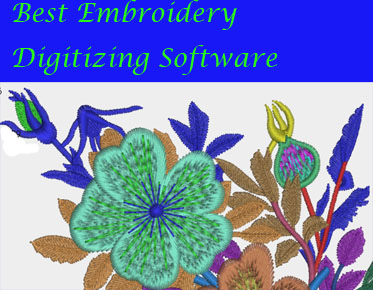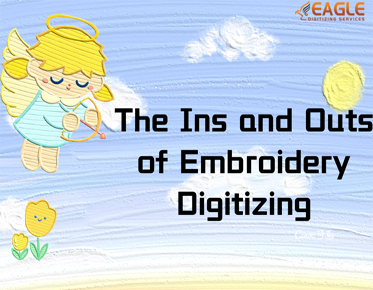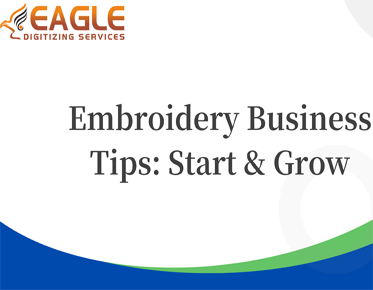Embroidery Software Showdown: Comparing Top Digitizing Tools
Embroidery has evolved from a traditional craft to a high-tech endeavor, thanks to digitizing software that allows artisans to translate intricate designs into machine-readable formats. As the demand for customized embroidery grows, so does the need for advanced digitizing tools. In this blog post, we'll delve into the world of embroidery software, comparing some of the top digitizing tools available to help you make an informed choice.
Understanding Digitizing Software
Digitizing software serves as the bridge between digital design and embroidery machines. It takes images or artwork and converts them into embroidery machine-readable formats, such as stitch files. These programs offer a range of features, from basic tools for hobbyists to advanced functionalities for professional embroiderers.
Criteria for Comparison
To evaluate the digitizing tools effectively, we'll consider several key factors:
- Ease of Use: How intuitive is the software interface? Is it user-friendly for
beginners, or does it require advanced knowledge?
- Design Capabilities: What design features does the software offer? Can it handle
complex designs and various file formats?
- Stitch Quality: The quality of stitches produced by the software greatly impacts
the final embroidery output. We'll examine how well each tool translates
designs into stitches.
- Customization Options: Does the software allow for customization of stitch types,
density, and other parameters?
- Support and Updates: Regular updates and customer support are crucial for resolving issues and staying up-to-date with the latest features.
1. Wilcom EmbroideryStudio
Ease of Use: Wilcom EmbroideryStudio stands out for its comprehensive feature set, but it does come with a learning curve, especially for beginners. However, once users familiarize themselves with the software, its intuitive interface and organized layout make navigation relatively straightforward.
Design Capabilities: Wilcom EmbroideryStudio offers a wide range of design tools, including advanced features like automatic digitizing, lettering, and complex stitch editing. Its compatibility with various file formats and support for intricate designs make it a preferred choice for professional embroiderers working on complex projects.
Stitch Quality: One of Wilcom's strengths lies in its ability to produce high-quality stitches, ensuring precise and consistent results. The software's advanced algorithms optimize stitch density and direction, resulting in smooth and professional-looking embroidery.
Customization Options: Wilcom EmbroideryStudio provides extensive customization options, allowing users to adjust stitch types, density, underlay, and other parameters to fine-tune their designs. This level of control is invaluable for achieving the desired aesthetic and ensuring compatibility with different fabric types.
Support and Updates: Wilcom is known for its reliable customer support and regular software updates. Users can access online tutorials, forums, and documentation to troubleshoot issues and stay informed about the latest features and enhancements.
2. Brother PE-Design
Ease of Use: Brother PE-Design prioritizes simplicity and ease of use, making it an excellent choice for beginners and casual embroiderers. Its intuitive interface features straightforward tools and navigation, allowing users to quickly create and edit designs without extensive training.
Design Capabilities: While Brother PE-Design may not offer as many advanced features as Wilcom, it covers the essential design tools required for most embroidery projects. Users can create custom designs, add text, and make basic adjustments to stitches and colors with ease.
Stitch Quality: Brother's software produces satisfactory stitch quality, suitable for everyday embroidery projects and personalization tasks. While it may not excel in intricate designs or complex stitch patterns, it reliably delivers clean and consistent results for common applications.
Customization Options: PE-Design provides basic customization options, allowing users to adjust stitch parameters such as density and length. While it may lack the depth of customization offered by more advanced software, it provides enough flexibility for most hobbyist and small-scale projects.
Support and Updates: Brother offers decent customer support and periodic software updates to address bugs, add new features, and improve performance. While not as extensive as some other providers, the support provided is adequate for the software's target audience.
3. Hatch by Wilcom
Ease of Use: Hatch by Wilcom strikes a balance between functionality and user-friendliness, catering to a diverse user base ranging from beginners to experienced embroiderers. Its modern interface and intuitive design tools make it accessible to newcomers while still offering advanced features for seasoned users.
Design Capabilities: Hatch provides a comprehensive set of design tools, including auto-digitizing, lettering, monogramming, and advanced stitch editing. Its compatibility with vector graphics and extensive library of pre-digitized designs further enhance its versatility and creative possibilities.
Stitch Quality: Like its counterpart, Wilcom EmbroideryStudio, Hatch delivers superior stitch quality, ensuring precise and professional results across a wide range of designs and fabric types. Its advanced algorithms optimize stitch placement and density, resulting in flawless embroidery output.
Customization Options: Hatch offers robust customization options, allowing users to fine-tune stitch parameters, adjust colors, and apply special effects to their designs. Its interactive preview feature enables real-time adjustments, empowering users to visualize and refine their creations with ease.
Support and Updates: Wilcom provides excellent customer support and regular updates for Hatch users, ensuring timely assistance and access to the latest features and improvements. The software's active community and online resources further enhance the support experience, facilitating knowledge sharing and collaboration among users.
4. Embird
Ease of Use: Embird is renowned for its affordability and simplicity, making it a popular choice among hobbyists and small businesses. Its modular design allows users to purchase only the features they need, minimizing complexity and cost while still providing essential digitizing tools.
Design Capabilities: While Embird may lack some of the advanced features found in higher-end software, it covers the basics well, including design creation, editing, and conversion. Its modular structure allows users to expand functionality as needed, making it a flexible and cost-effective solution.
Stitch Quality: Embird produces satisfactory stitch quality, suitable for most everyday embroidery projects and personalization tasks. While it may not offer the precision and optimization capabilities of more advanced software, it reliably delivers clean and consistent results for common applications.
Customization Options: Embird provides basic customization options, allowing users to adjust stitch parameters and colors to achieve the desired look. While it may not offer the same level of depth and control as premium software, it provides enough flexibility for casual users and small-scale projects.
Support and Updates: Embird offers decent customer support and periodic updates to address bugs and add new features. While not as extensive as some other providers, the support provided is adequate for the software's target audience, with online resources available for troubleshooting and assistance.
5. Janome Digitizer
Ease of Use: Janome Digitizer features a straightforward interface and essential design tools, making it a suitable choice for users who prefer simplicity and ease of use. Its intuitive workflow and clear navigation make it accessible to beginners and casual embroiderers.
Design Capabilities: While Janome Digitizer may lack some of the advanced features found in more comprehensive software, it covers the fundamental design tools required for most embroidery projects. Users can create custom designs, add text, and make basic adjustments with relative ease.
Stitch Quality: Janome's software delivers satisfactory stitch quality, suitable for everyday embroidery tasks and personalization projects. While it may not offer the precision and optimization capabilities of higher-end software, it reliably produces clean and consistent results for common applications.
Customization Options: Janome Digitizer provides basic customization options, allowing users to adjust stitch parameters such as density and length. While it may not offer the depth of customization found in premium software, it provides enough flexibility for casual users and small-scale projects.
Support and Updates: Janome offers decent customer support and periodic updates to address issues and enhance software functionality. While not as extensive as some other providers, the support provided is sufficient for most users, with online resources available for assistance and troubleshooting.
Conclusion
In conclusion, the choice of digitizing software depends on various factors,
including user preferences, skill level, budget, and project requirements.
Whether you're a hobbyist looking for simplicity and affordability or a
professional seeking advanced features and precision, there's a embroidery digitizing tool
available to suit your needs. By considering factors such as ease of use,
design capabilities, stitch quality, customization options, and support, you
can make an informed decision and elevate your embroidery
projects with the right software solution. Explore the options,
experiment with different tools, and unleash your creativity with the power of
digital embroidery.



